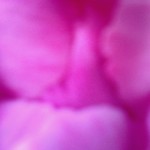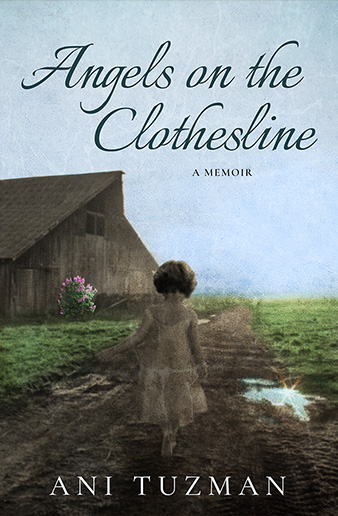Mary Oliver writes of the peonies in her poem, “Peonies”:
“Wild and perfect for one moment before they are nothing forever…”
Here in New England, the peonies are in full bloom. What do peonies have to do with your creativity? Mary Oliver’s poem is strewn with hints…
This morning the green fists of the peonies are getting ready
to break my heart
as the sun rises
as the sun strokes them with his old buttery fingers
First, it matters. It matters that the peonies exist and open. It matters that they move…under the shifty wind/as in a dance to the great wedding. It matters that you, between the shifty winds and the shifting sands of your life, open to what is within you and reveal that essence to the world through your unique dance, including the dance of your letters. Giving voice to what is within you is an offering that makes our world more beautiful.
their red stems holding
all that dampness and recklessness
There is a certain recklessness in allowing ourselves to open as naturally, as shamelessly as the peony in response to her inner rhythm and call. Often, we unintentionally or inadvertently try to control opening; we resist abandon. Despite ourselves, we squelch our creative impulses. We may even fear our own full bloom, not even allow ourselves to imagine it. All around us nature with the sun’s buttery old fingers and the moon’s silken, cool breath beckons us to be even just a bit more recklessly creative. Unlike the peony, however, we always have a choice.
And all day, the black ants climb over them,
boring their deep and mysterious holes
into the curls,
craving the sweet sap.
We, too, bore mysterious holes—piercing with our thoughts, feelings and our yearning, the silken petals of our hours, craving the sweet sap of love, understanding, and the peace beyond understanding. Our writing is the boring, is the mystery, is the sap. We make our way to the sweet sap of our essence.
And there it is again—
Beauty the brave, the exemplary,
blazing open
We have countless ways to draw forth beauty: with words, paint, kindness, patience, a spade shovel, flute, mixing spoon, when we listen with an open heart….
To walk with love through this world, looking for and finding beauty where it may be harder to see, is brave, is creative. We are not only creating our moment-to-moment experience, we are blessing the world. I have a friend who when getting out of bed, before she places her feet on the floor each morning, says “Grateful Feet.” And there it is again—how being alive and seeing beauty is brave and exemplary…
Do you love this world? the poet asks.
Mary loves this world out loud, shamelessly in her poems, inviting us to cherish our humble and silky lives right alongside her as we wander with her marsh, meadow, forest or garden. Wherever she wanders, it is always in her own heart, posing questions that reverberate in ours.
To write is one great way to love this world, whether what you write is just for you or to be shared. Writing illumines. Writing harmonizes. Writing frees. Writing heals. Writing transforms. Writing cherishes experience, insight, even not knowing.
Do you adore the green grass with its terror beneath?
In our writing as well as our living, we can praise the beauty while embracing the terror. We can write fearlessly—and with fear causing our “lush trembling.” We can write into the terror, the shadow, what Natalie Goldberg calls the underbelly of experience. Writing illumines the darkness, reveals the fear itself naked in the beams.
The first line of this post was actually the last line of Mary’s poem.
their eagerness
to be wild and perfect for a moment, before they are
nothing forever.
Wild and perfect. Wild, at least, when we allow not-knowing, when we, even it’s only from time to time, relinquish the illusion of control that was never really ours. And perfect? What if you are already? And what if the purpose of being alive—the most creative work of all—is discovering the perfection you are?
Maybe we can take a few lessons from the peonies.
*Here’s the whole poem:
 Peonies
Peonies
by Mary Oliver
This morning the green fists of the peonies are getting ready
to break my heart
as the sun rises,
as the sun strokes them with his old buttery fingers
And they open—
pools of lace,
white and pink—
and all day the black ants climb over them,
boring their deep and mysterious holes
into the curls,
craving the sweet sap,
taking it away
to their dark, underground cities—
and all day
under the shifty wind,
as in a dance to the great wedding,
the flowers bend their bright bodies,
and tip their fragrance to the air,
and rise,
their red stems holding
all that dampness and recklessness
gladly and lightly,
and there it is again—
beauty the brave, the exemplary,
blazing open.
Do you love this world?
Do you cherish your humble and silky life?
Do you adore the green grass, with its terror beneath?
Do you also hurry, half-dressed and barefoot, into the garden,
and softly,
and exclaiming of their dearness,
fill your arms with the white and pink flowers,
with their honeyed heaviness, their lush trembling,
their eagerness
to be wild and perfect for a moment, before they are
nothing forever?
G'Mar Chatima Tova
I close with this customary greeting whose literal meaning is: "a good final sealing." I will add to that: May you know the love of which you are made. What better than to know this?
With gratitude,
Ani
Your comments make this blog a conversation!
I would love to hear from you.
To avoid spam all comments are moderated by Ani. So if you don’t see your comment show up, not to worry; your comment will be up within within 24-48 hours






So beautifully said and expressed variously, as is everything you write Ani.
Yes, I saw how quickly the peonies that I put in a vase on the table carried their sweet scent through my house and then dropped their petals like feathers molting. A wonderful reminder to be present and appreciative of the moment, having no guarantee of the next one.
The poem by Mary Oliver is beautiful. I’m not really familiar with Mary’s work, but I loved the beautiful language and the thought behind the poem. I put flowers on the various “pujas” (altars) in my house. And I take pictures of the flowers to honor them and preserve them – since, as Mary points out – their beauty is short-lived, and then they become just “dead flowers” that go into my recycle bin for the city to pick up. But I am ever grateful for their beauty, while it is in its prime, and am always a little sad to see them begin to wilt.
And I think, almost always, as I put them in my little recycle container, before bringing them to the big one in the garage, that we are like that. I’m in the ”wilting” stage, whereas my grandchildren are still buds, and haven’t yet reached their full beauty, which comes in the late teens and twenties, and in some ways, into the thirties – and then the “wilting” process begins – the wrinkles, the grey hair, the fatigue, the pains in the limbs, etc. until finally the life process stops, and the beauty is just a “dead body.”
But that is the life process, and as you point out, artists see beauty in what others miss, so I strive to see beauty in all of it.
Dear Shivani,
I so appreciate your intention to see and value the beauty in all the stages of life, including the “wilting” and dying.
I was recently with a dear friend in her mid 80s on the heels of reading a passage by Eckhart Tolle’s about aging. He describes the luminosity of essence that can shine even more brightly through an again, frailing body that is becoming increasingly transparent. That was exactly my experience with my friend. Her inner radiance was shining brilliantly through her skin and eyes. It was beautiful to behold.
Thank you for the contribution of your comment here and your perspective of seeing beauty everywhere.
With love,
Ani